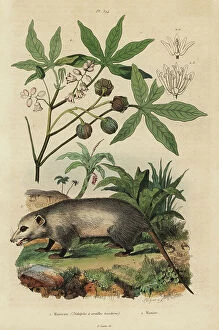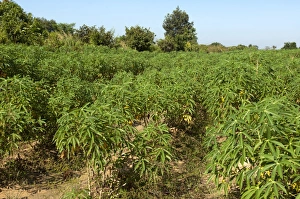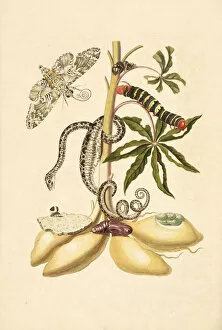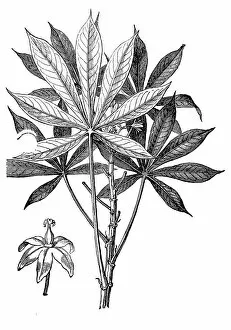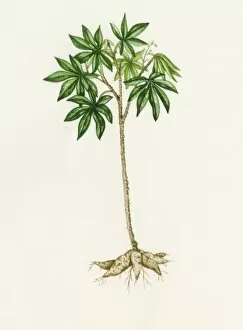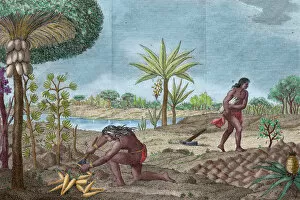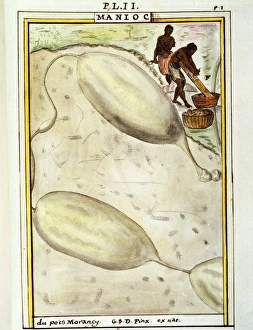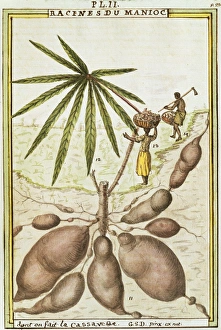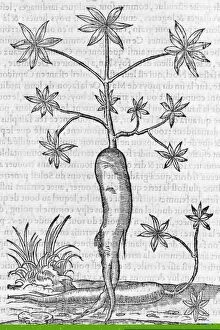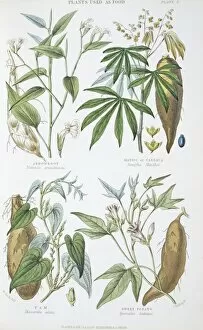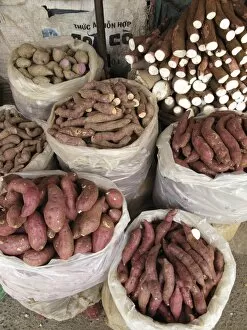Manihot Esculenta Collection
"Manihot Esculenta: Unveiling the Fascinating World of Cassava and its Connections" Discover the intriguing tale of Manihot esculenta, commonly known as cassava or yuca
All Professionally Made to Order for Quick Shipping
"Manihot Esculenta: Unveiling the Fascinating World of Cassava and its Connections" Discover the intriguing tale of Manihot esculenta, commonly known as cassava or yuca. This versatile plant has a rich history intertwined with various species and cultures. First encountered by South American Indians in the 16th-18th century, this tuberous root captured their attention for its remarkable properties. The Virginia opossum, Didelphis virginiana, also found solace in this plant's presence. With its scientific name derived from "manioc, " Manihot esculenta became an essential part of indigenous communities' diet and culture. Its edible roots provided sustenance and nourishment for generations to come. Delahaye's watercolor illustrations from 1789 beautifully depict the botanical features of cassava plants. These antique engravings showcase the intricate details that make Manihot esculenta so unique. From Siem Reap, Cambodia to Southeast Asia, cultivation of cassava thrived across different regions. Farmers embraced its resilience and adaptability to diverse climates, making it a staple crop for many communities worldwide. The metamorphosis insectorum Surinamensium further highlights the significance of cassava within ecosystems. Branches adorned with Manihot esculenta attracted rustic sphinx moths and black tegu lizards alike - showcasing nature's interconnectedness. Today, we continue to appreciate the manifold uses of cassava - whether consumed as a dietary staple or processed into flour or tapioca pearls. Its versatility extends beyond culinary purposes; it serves as a valuable source for biofuel production too. As we delve deeper into understanding Manihot esculenta's multifaceted existence, let us celebrate its cultural heritage while recognizing its potential contributions towards sustainable development on our planet.

